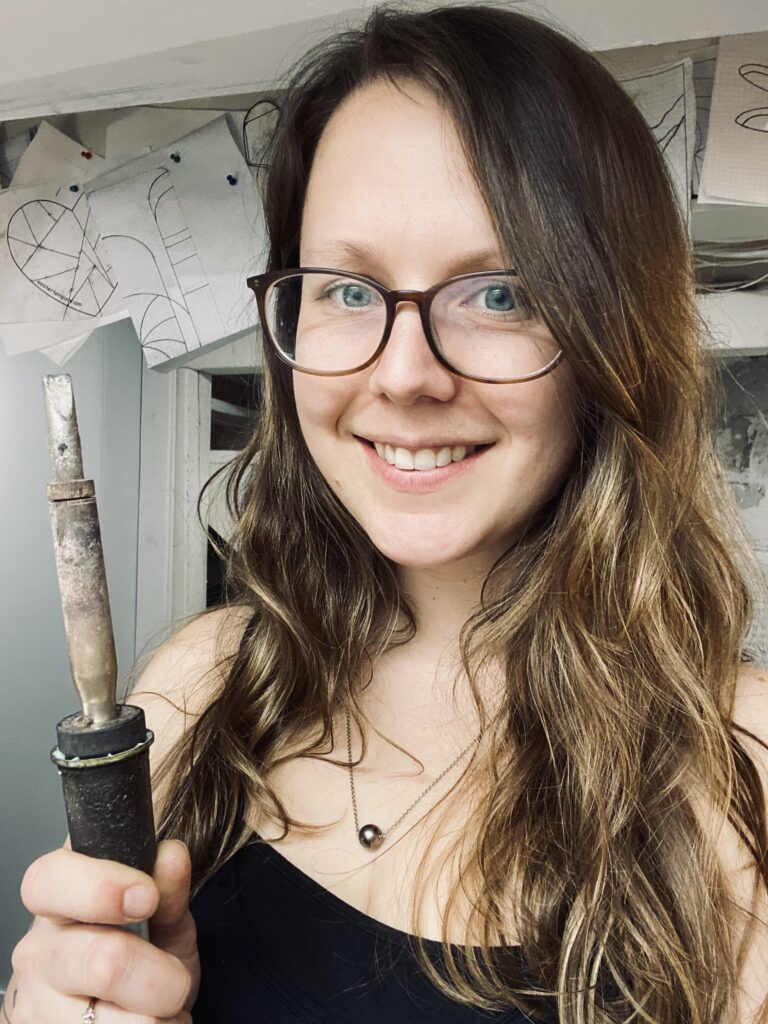
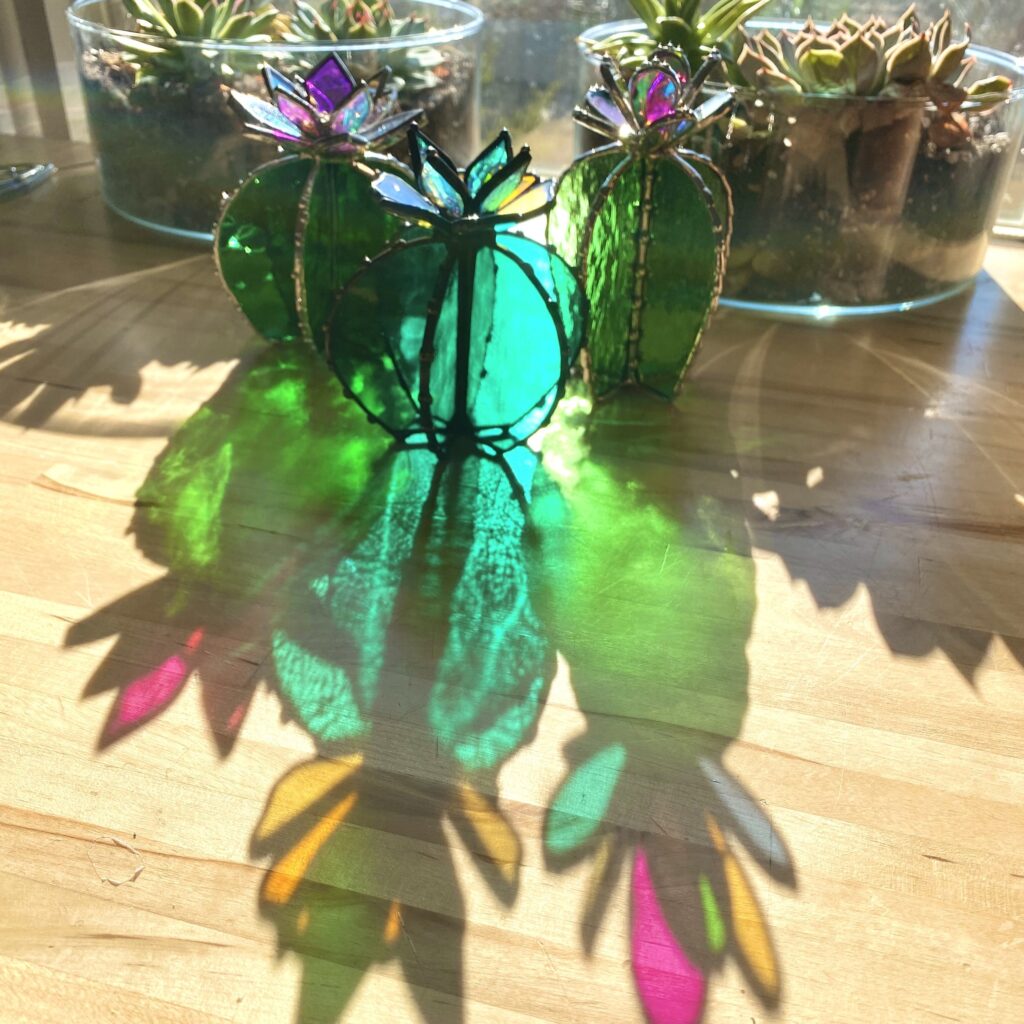
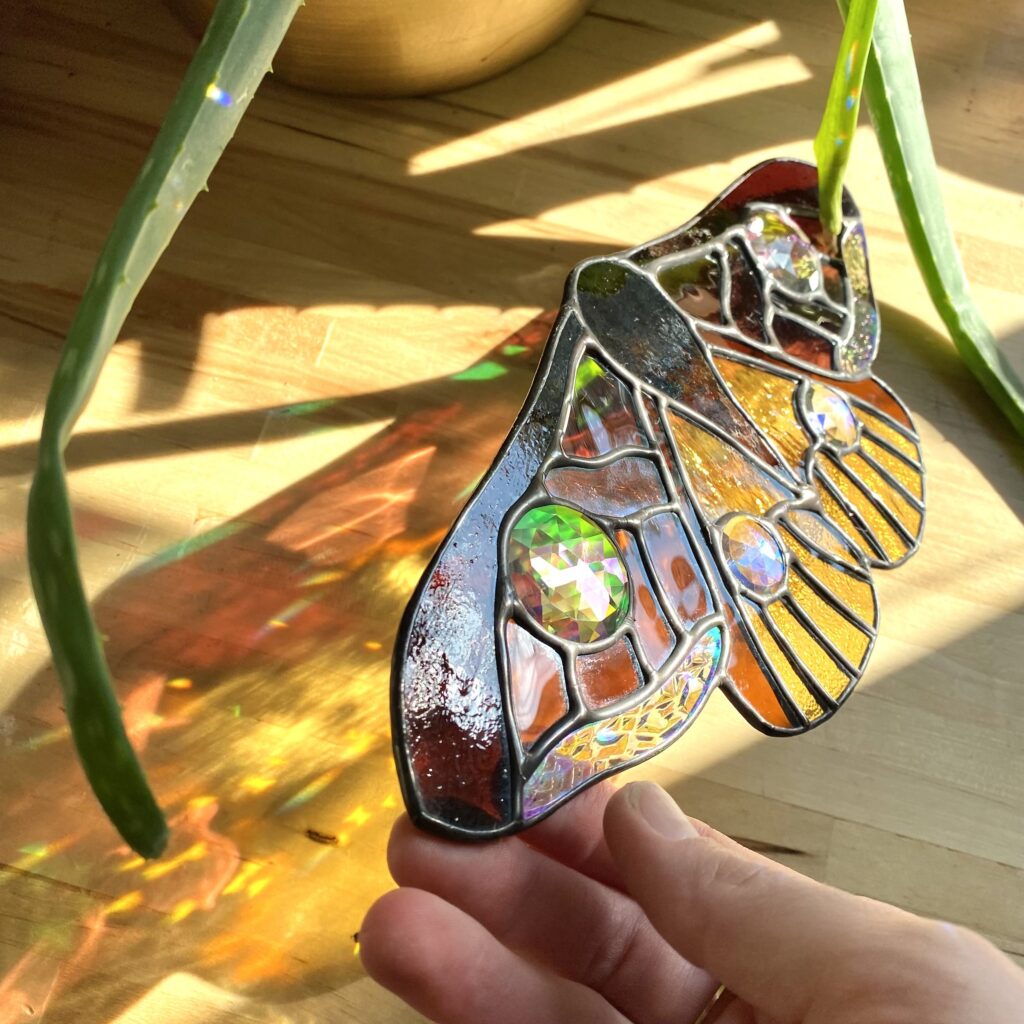
Hanna Hastings is an independent contemporary artist who has been working in the medium of stained glass for 20 years. She opened Sand and Fire Works in Ontario, Canada and began sharing her designs on Instagram in 2019. As Hanna’s art garnered more attention, she found an ad for WAZER desktop and saw an opportunity. WAZER desktop was the perfect size for her small studio, down a flight of stairs that’s 37” wide. After installation, she was up and running quickly, learning the software and expanding her design and production capabilities
Hanna’s talent combined with WAZER’s capabilities meant that her designs evolved fast. People noticed Hanna’s hard work and her 250,000 followers were buying out her new supply in as little as 6 minutes on release!
A Cutting-Edge Addition to an Ancient Craft
Unlike a laser cutter, which uses heat (and doesn’t play nicely with glass), WAZER uses high-pressure water mixed with abrasive grit to cut through virtually any material—including delicate stained glass.
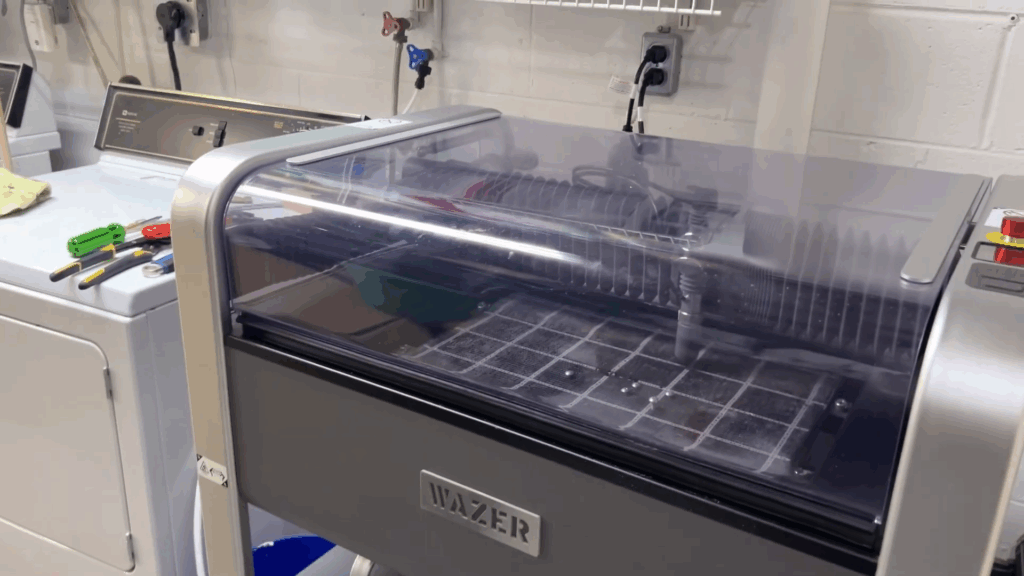
For Hannah, it meant she could offload some of her most tedious and error-prone tasks to a machine built to handle them.
“I can’t tell you how much time and frustration this saved me”
DIY Setup—No Engineering Degree Required
Though she admits she’s “not particularly technical,” Hannah tackled WAZER’s setup mostly solo, save for a little help lifting and leveling the machine. The initial learning curve looked steep—but within hours, she was running her first cuts.
And those first results? Better than expected.
“I was like… wait, that’s it? It just worked?”
—Hannah, after running her first WAZER cut
From there, things ramped up quickly.
Streamlining the Ornaments Workflow
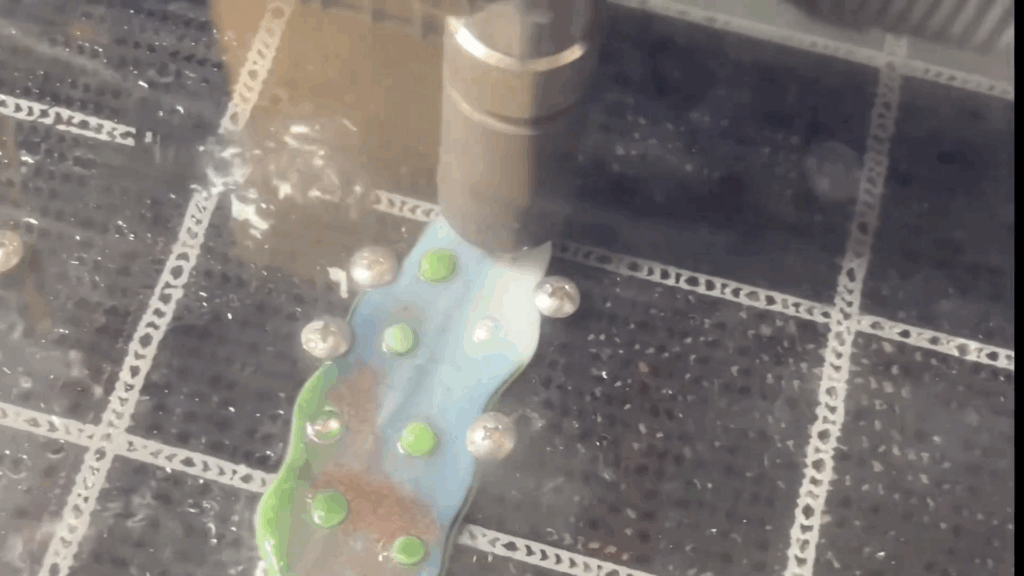
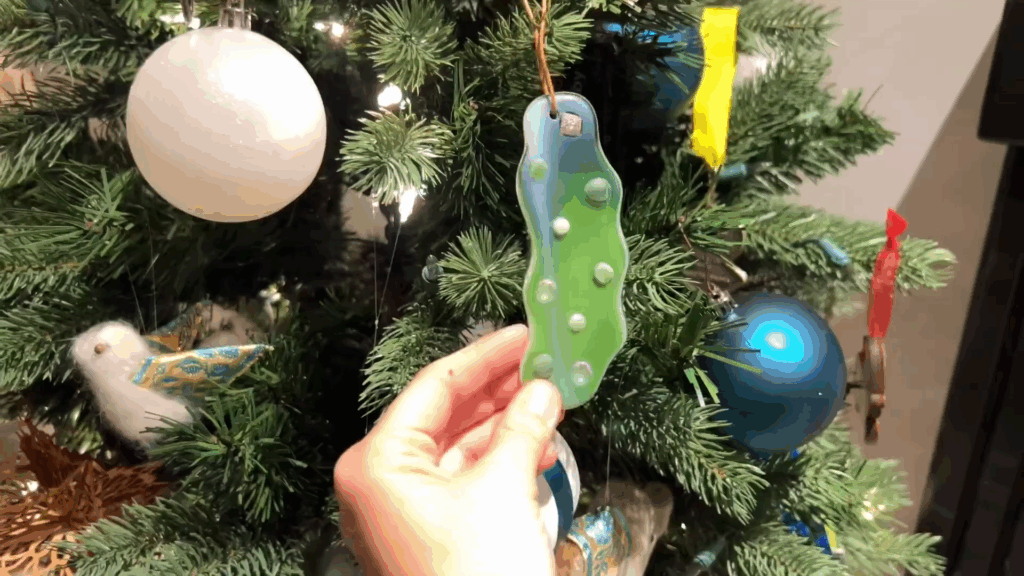
Hannah’s first major use case: her popular Christmas ornaments, which used to require drilling by hand—a time-intensive and risky step that took 3+ minutes per piece. With WAZER, holes were cut cleanly in under 10 seconds—no cracks, no water baths, no broken bits.
That alone transformed her production process. She was now having fewer pieces break and her turn around times were shorter. All of this meant she could spend more time on soldering and designing new pieces.
Precision Designs: The “Howling Wolf” Returns
One design Hannah had nearly stopped making was her detailed “Howling Wolf” nightlight, which required tiny interior cuts—like sharp ears and mouth curves—that were hard to do by hand. Not only were the ears and mouth difficult to do but they took a lot of time. The shape was also never quite perfect. The diamond drill bit she used to cut those parts out could only leave a rounded shape in the space, even though the design called for sharp edges. With WAZER added to her tool belt she decided to see if this process could be improved on.
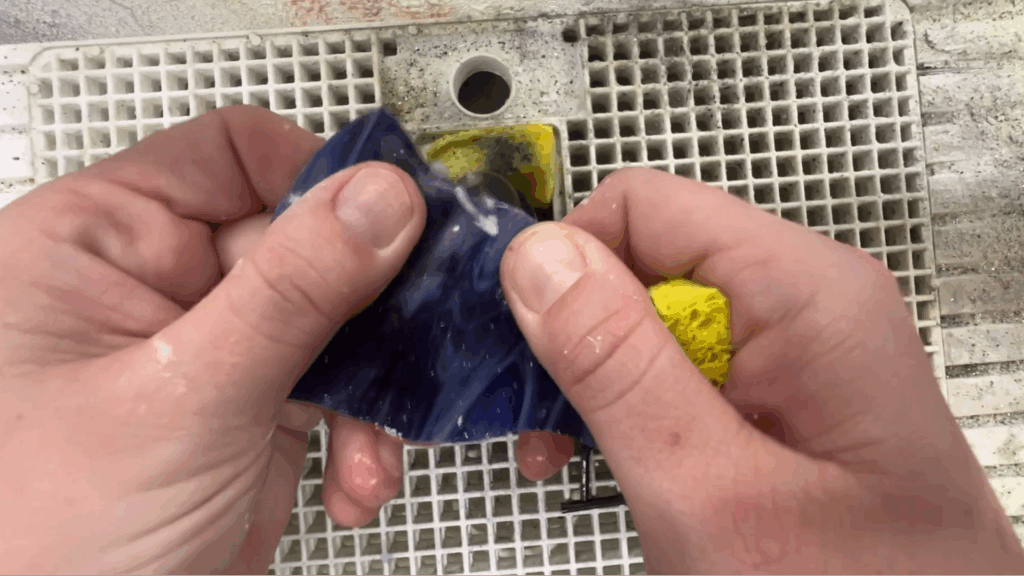
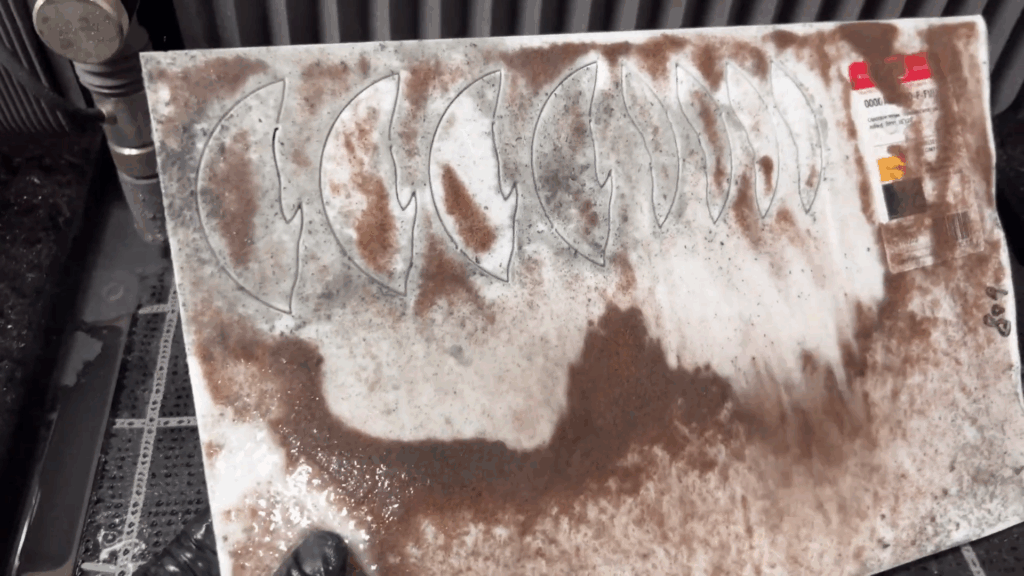
Using the WAZER:
- She converted her original pattern into a digital vector file (using Inkscape).
- Added cut tabs in WAZER’s software (WAM) to hold pieces in place.
- Set up multiple colors of glass for batch cutting.
The final result? Cleaner edges, sharper detail, and no more fiddly micro-grinding with a diamond bit.
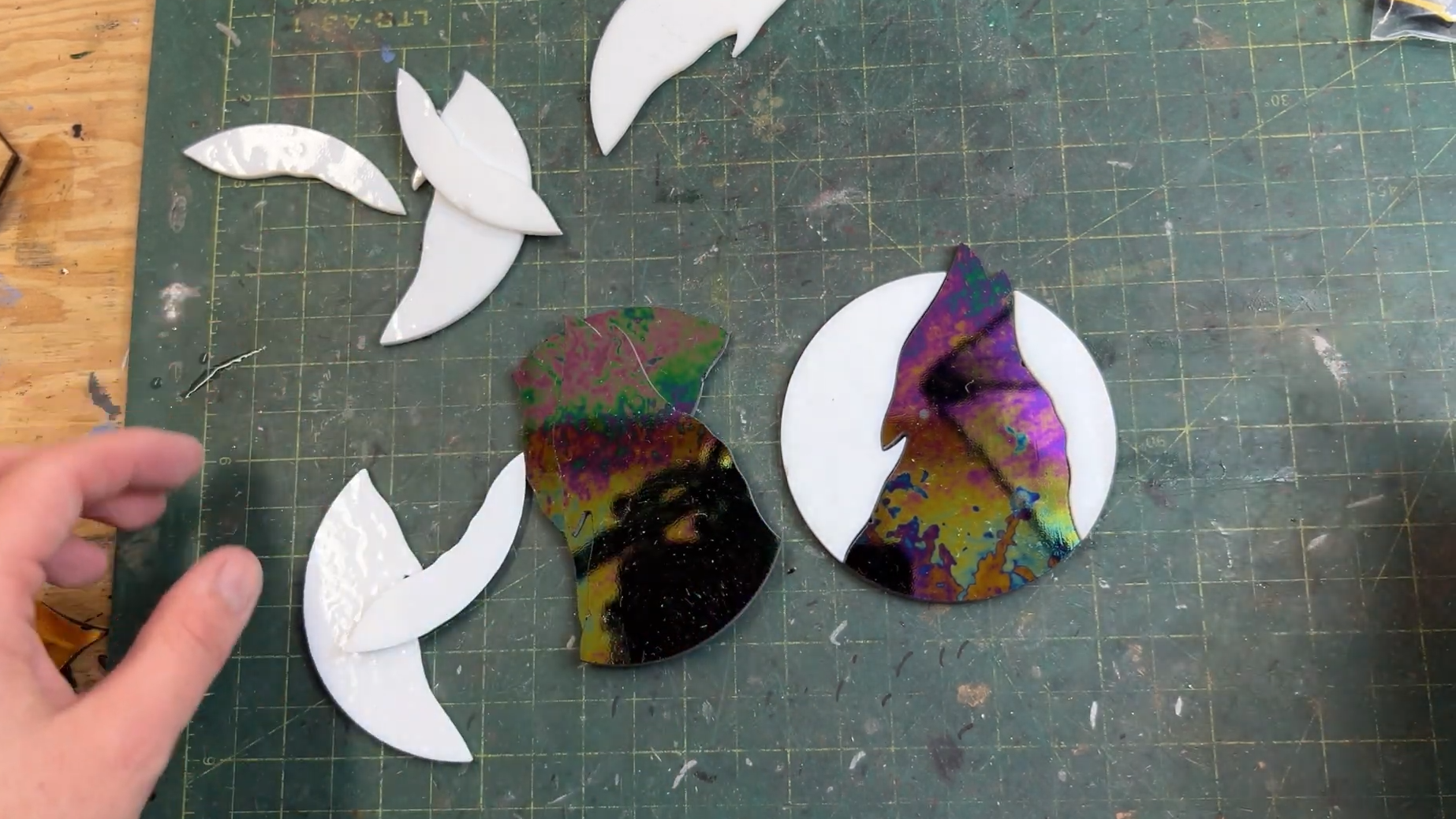
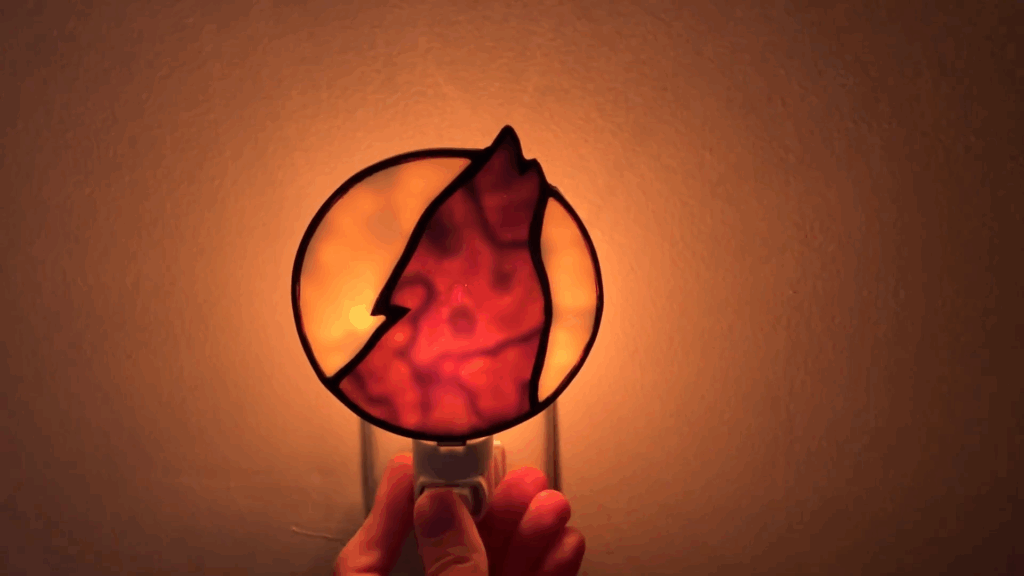
“This was a product that was almost retired. Now I can bring it back—with way less cursing.”
Empowering Artists with Technology
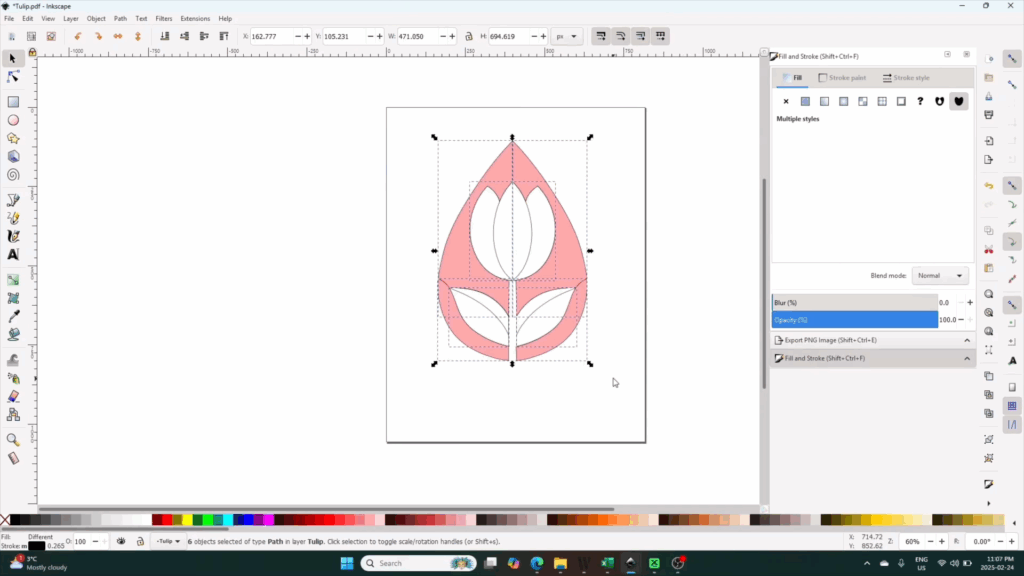
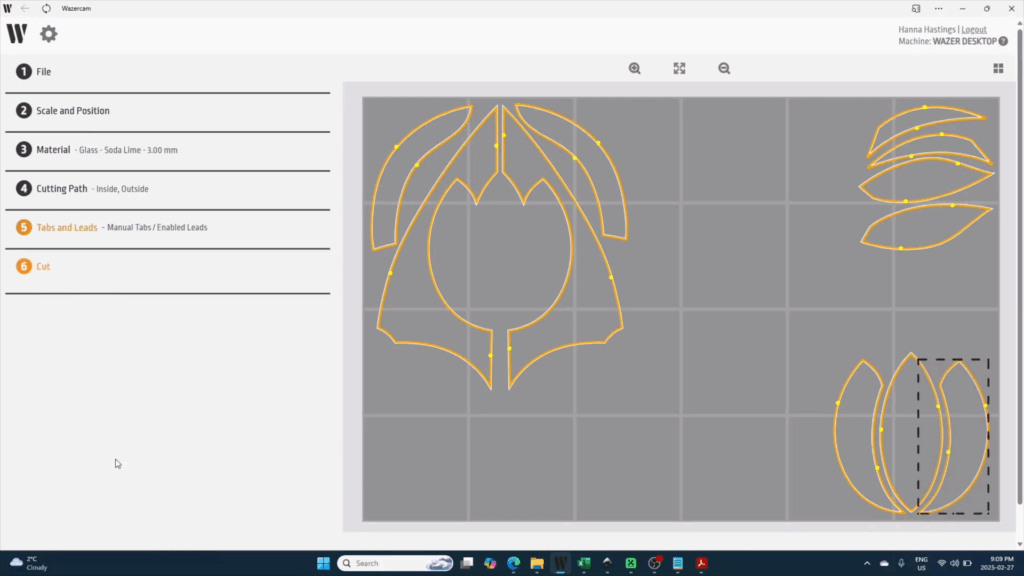
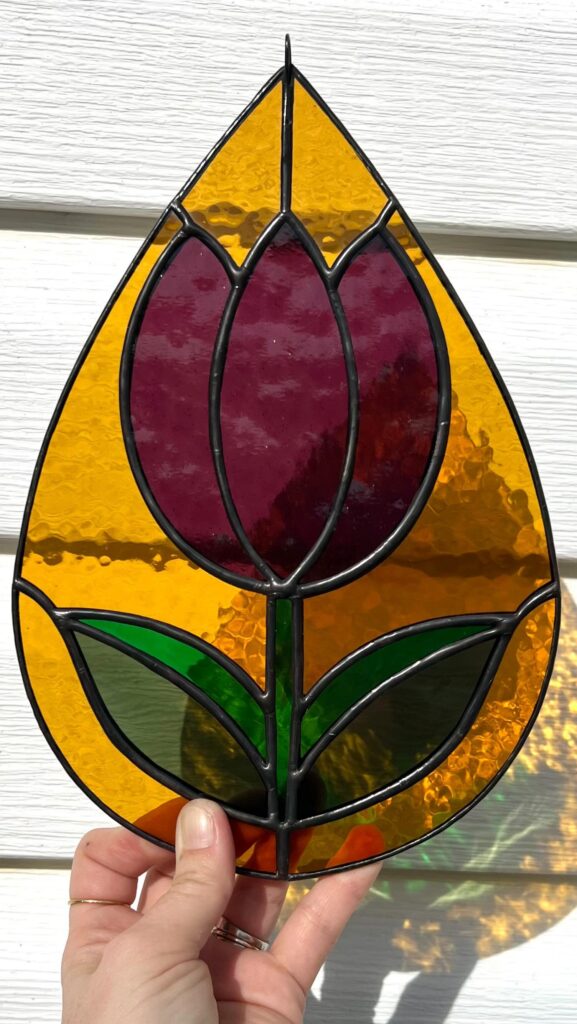
As Hannah has become more confident in her abilities with WAZER she uploaded a full walkthrough for fellow artists looking to dip their toes into digital cutting. From scanning sketches to exporting g-code, she demystifies the process with humor and approachability. Her video showcases how WAZER can be a hugely efficient and easy to learn tool for glass artists.
“You don’t want to take a whole course on this. You just want your tool to work for you.”
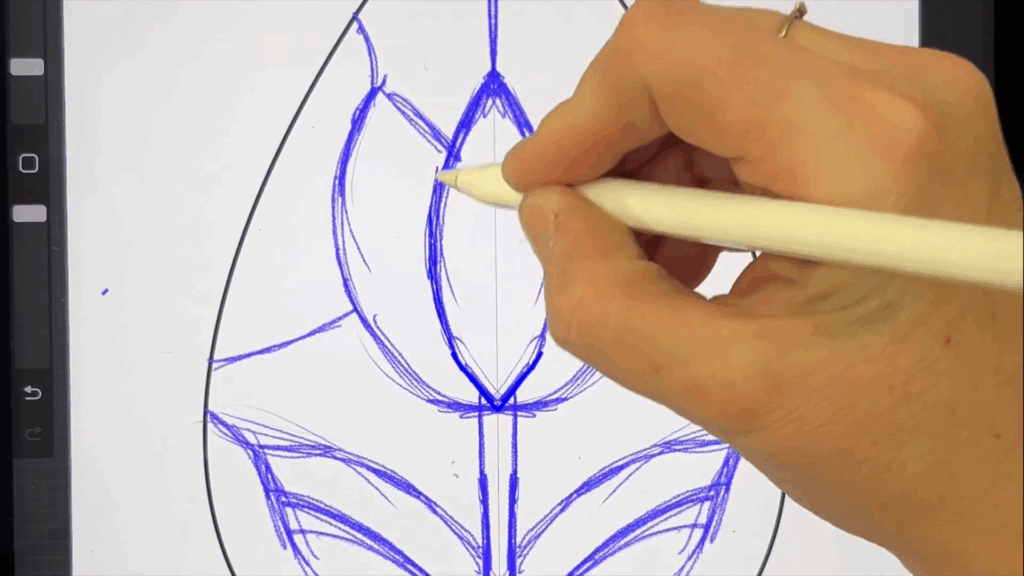
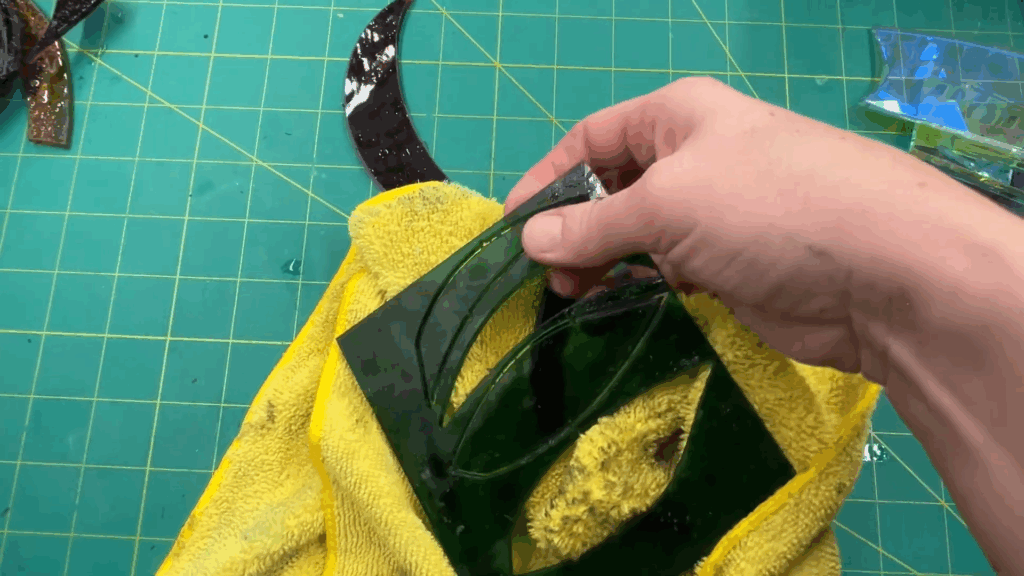
Why It Matters
For small creative businesses, scaling without sacrificing quality is the ultimate challenge. WAZER has given Hannah a way to increase output, reduce manual strain, and even reintroduce designs she once had to abandon—all without outsourcing or compromising her signature handmade look.
Thinking About Adding a WAZER to Your Workflow?
Whether you work in stained glass, jewelry, metal, tile, or composites, WAZER can help you:
- Save time on repetitive cutting tasks
- Improve accuracy for intricate designs
- Expand product lines without adding staff
- Focus more on design and assembly—not grunt work
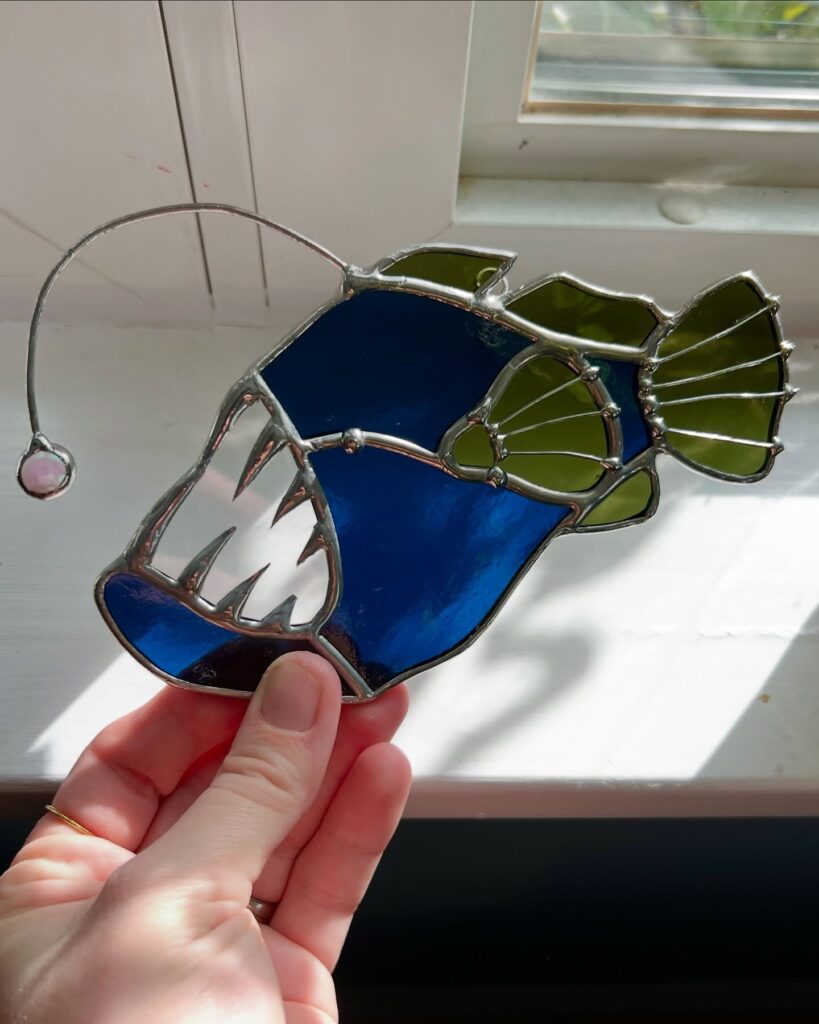
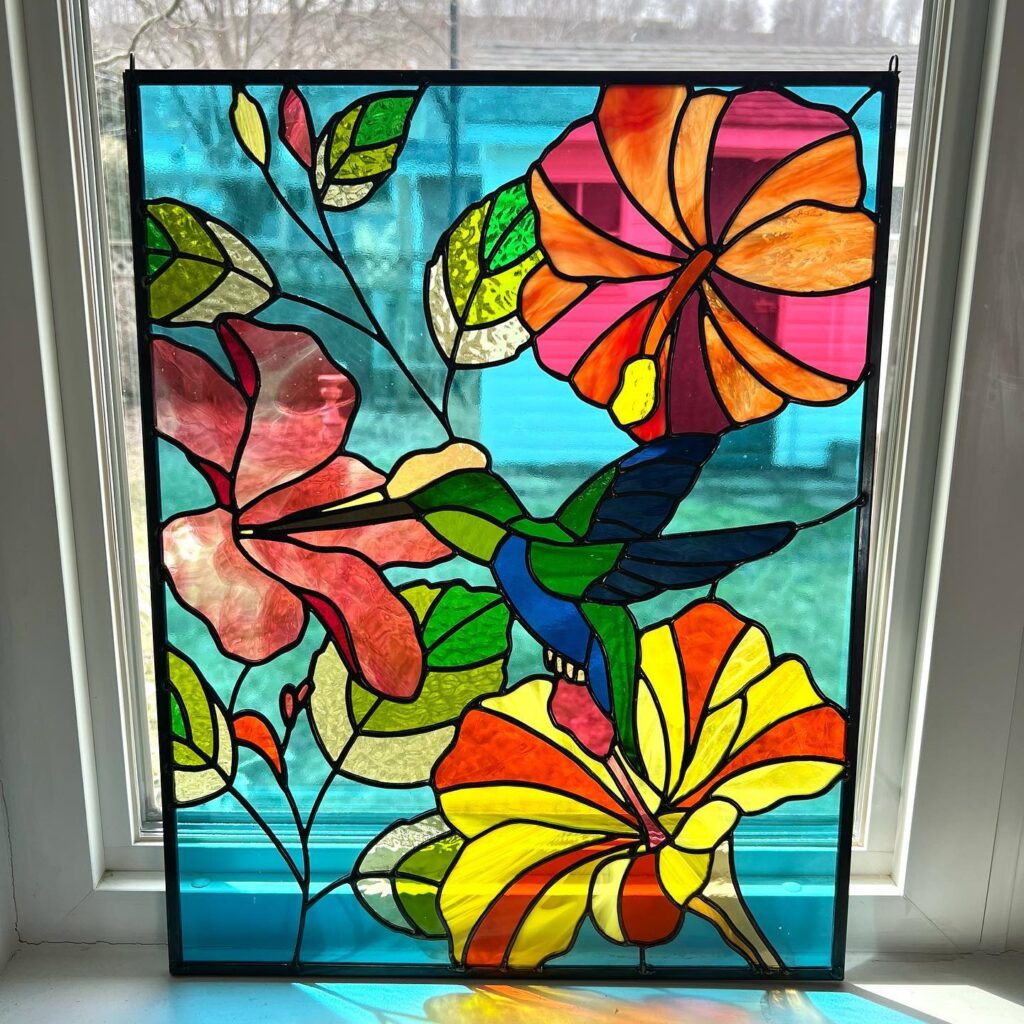
For Hannah, it wasn’t just about going faster—it was about falling in love with her process again.
